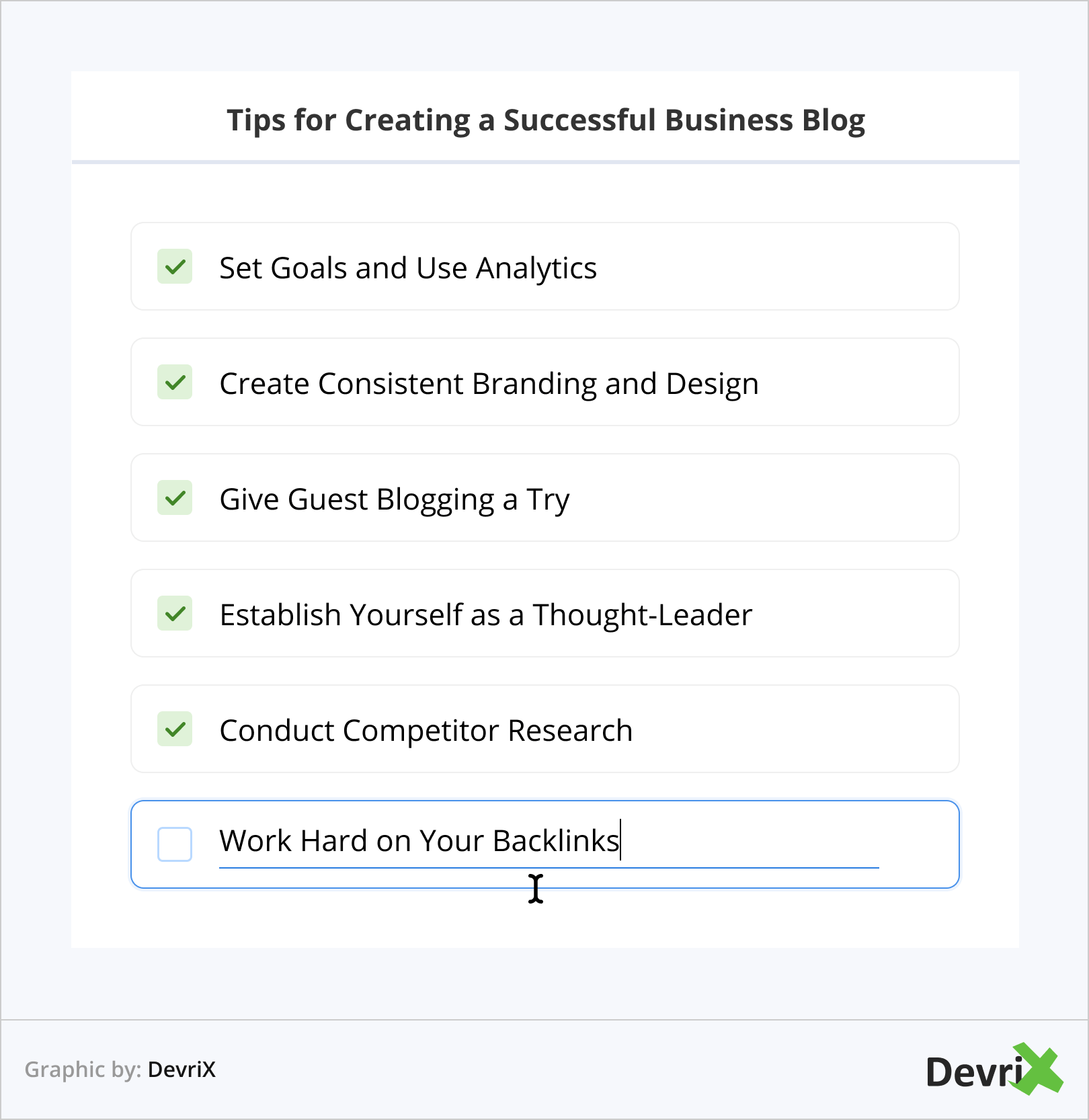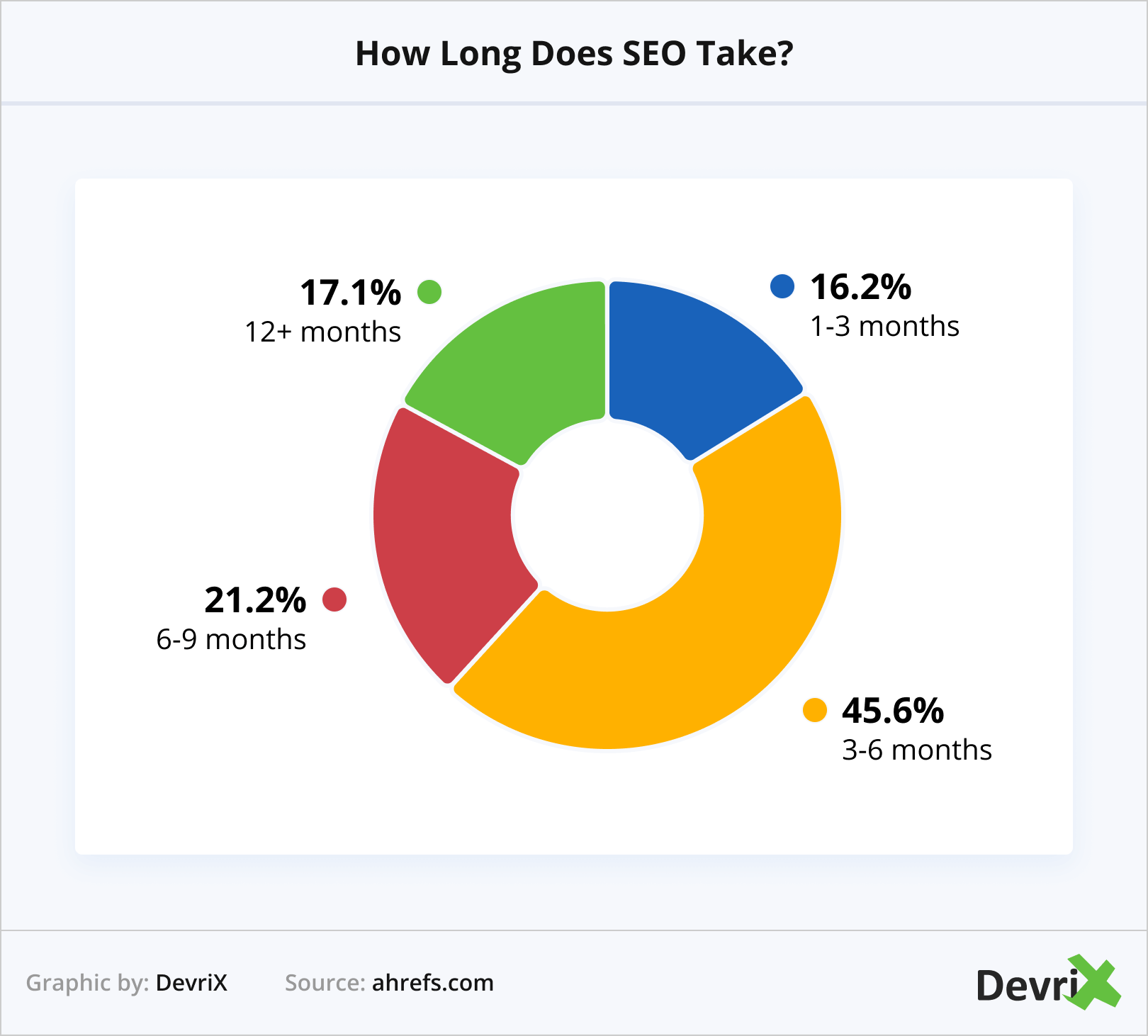It’s 2022 – blogging for a business is a must.
Why?
It’s the most efficient way to attract traffic to your website, build your online reputation as a trusted expert, and consolidate your digital presence.
And that’s not nearly all.
Blogging allows you to attract new leads the inbound way – instead of you chasing after the customer, the customer comes to you.
As a result, you can build a stronger connection with them, and ensure a mutually beneficial relationship.
With your content, you can show your potential and existing customers that you know and understand their pain points and needs and have solutions that can make their lives better.
Furthermore, you can use your blog to educate your audience on the benefits of your product, how to use it, and how to overcome common issues that they face in their day-to-day.
However, nowadays, practically, everyone has a blog.
This means that if you want to stand out and be successful, you need to go the extra mile and put in the necessary work and effort.
And writing high-quality content is only half of it.
In this article, we provide a practical business blogging guide that will help you create a stellar blog that both your customers and search engines can’t get enough of.
Let’s get on with it!
How to Start Blogging for Business
The most important part of starting a successful business blog is planning.
By taking the time to consider the key aspects of your blog in advance, you can map out a course of action, and ensure that you are moving in the right direction.
Of course, there will be changes along the way, but it’s always easier to adjust your strategy than to make it up as you go.
In this guide, we highlight the 7 most important steps to consider before you start blogging for business:

1. Conduct Market Research
To be able to provide content that really matters to your customers and delivers the desired traffic and engagement, you need to know your audience well. This means that you should invest the time and resources in understanding their needs, the types of issues they’re struggling with, and the information they most often look up online.
Furthermore, it is important to find out more about their online habits and behavior:
- Search engines and verticals
- Preferred types of sources
- Favored content formats
- Frequently used communication channels
- Social media platforms
- Browsing behavior
- Favorite devices
The easiest way to collect this data is to conduct various methods of market research, such as surveys, observation, social media listening, and – once you start publishing – website analytics.
In addition, you should consider checking out the competition to see what types of content they publish, how it performs, and whether or not it promotes engagement.
This may provide you with some valuable ideas on what to do and what to avoid in your own blog.
2. Choose Your Niche
Next, you need to figure out your niche.
Simply put, this is the general topic that your blog will focus on.
Your niche needs to be relevant to your industry and field of expertise, as well as to the interests of your customers.
However, coming up with a niche is easier said than done.
On the one hand, if it’s too broad, finding topic ideas will be less of a challenge, but it may become difficult to retain your audience’s attention because not all of the content that you publish will be relevant to all your readers.
On the other hand, a narrower niche makes it easier to build a loyal audience, but, at the same time, it’s easier to saturate it and run out of subjects to write on.
When trying to figure out a balance, consider the following:
- Where do your credibility and authority lie?
- Do you have in-house data and/or unique industry insight that you can rely on?
- Are there any relevant niches that haven’t been explored yet?
- What type of audience do you want to attract?
3. Create a Keyword Strategy
Once you are aware of your niche, you should come up with a keyword strategy.
To that end, you need to research and list the main keywords that will represent the general topics of your blog. Then, for each of these topics, you need to list secondary search terms.

This way, you can create the general structure of your blog and can ensure that you follow a consistent approach, instead of randomly choosing what to publish.
As your blog grows, you can add new keywords to the list and keep track of what topics you have already published, which ones you plan to address, and, ultimately, how to provide exhaustive information to your readers.
This approach can not only help you better plan your blogging efforts but can, potentially, help you avoid issues such as keyword cannibalization.
Furthermore, you can use these search term trees as the basis of pillar posts and pertinent content clusters.
This type of content organization makes it easier for search engines to understand what your blog is about, and figure out the hierarchy of your pages. When implemented properly, they also contribute to your internal linking strategy.
As a result, when crawling your websites, the bots can see that you provide exhaustive information on important topics. This shows you as an expert, and together with other factors, can boost your credibility and authority, and consolidate your Google EAT status.
4. Give SEO an Early Start
Speaking of SEO, for your business blog to succeed, you need to start with search engine optimization and develop a strategy as early as possible.
Why?
SEO takes time.
In fact, according to recent research by Ahrefs, more often than not, SEO efforts take between three and six months to deliver results.
Meanwhile, it’s a safe bet that at least some of your competitors are a few steps ahead of you, so you don’t have any time to lose.
To increase your chances of SEO success, you have to simultaneously work on all 4 pillars of SEO:
- On-page SEO
- Off-page SEO
- Technical SEO
- Content
This means that you need to do your best not only to deliver high-quality content but to make it visible and discoverable by search engines.
The robots don’t understand information the way people do, so they need some extra help in order to be able to index your pages properly and deliver them to the best search result queries.
By making this possible, you increase the chances of attracting valuable organic traffic and expanding your reach and audience.
If you’re using WordPress, you can easily implement some of the SEO basics by installing plugins such as Yoast, or Rank Math.
However, in case you’re struggling to keep up with SEO, you should consider hiring a professional agency to give you a hand.
This goes especially for technical SEO because the standards of search engines are constantly changing and evolving. To maintain your visibility you need to live up to them and provide a seamless user experience.
5. Hire Professional Writers
Blogging for business entails higher standards than any other type of online content creation. In a way, the quality of your blog is a reflection of your whole business, because, more often than not, this is the first touchpoint of any potential customer.
If your articles are poorly written, it will be difficult for your readers to take you seriously, view you as a credible source of information, or trust you with their money.
To avoid this, you should consider hiring professional writers who not only know the pertinent topics well but also know how to write for both humans and robots.

This way you can deliver content that is well-structured, easy-to-read, and informative and, at the same time, contributes to your SEO.
If you can’t afford to hire in-house expert writers, you should consider working with a network of freelancers and guest writers and hiring subject matter experts and editors to help out with the more complex topics.
Regardless of what approach you chose, you need to ensure that all content that you publish is consistent and follows the same standards, tone of voice, style, and formatting.
This will fortify your brand identity and make it easier for your readers to interact with your articles.
6. Set Up an Editorial Calendar
To be consistent in your business blog and ensure that you never run out of topic ideas and content to publish, it’s advisable to create an editorial calendar.
This will allow you to organize your efforts, implement better planning, and create a reliable workflow for your content team.
You can track for bottlenecks and blockers, optimize processes, and make sure that deadlines are met.
Regardless of whether you use a dedicated tool or a simple spreadsheet, the calendar will provide you with an overview of content creation and publishing, and help you with your marketing and content strategy.
Depending on your needs, you can decide how many times a week/month to publish, what types of content to post depending on the day of the week or the time of the year, how to promote and distribute your blog, and so on.
Furthermore, you can create a stockpile of articles to ensure that when unexpected setbacks come your way, they won’t affect your publishing schedule.
This way, your audience is likely to learn to expect your posts, and you will never disappoint.
Furthermore, you can align your blog’s editorial calendar with your social media planning and achieve an even better level of consistency in your digital presence.
7. Promote Your Blog
Unfortunately, writing high-quality content and publishing on a regular basis may not be enough to make your blog popular, especially in the early stages of your endeavor.
By promoting your blog, you can increase traffic, reach new audiences, and boost the performance of your content.
How you approach your campaigns and where you focus your efforts depends mostly on the preferences of your target audience. Therefore, you should consider using the data from your market research, and choose the most appropriate communication channels and formats.
Some of the tactics to try include, but are not limited to:
- Repurposing content for different channels
- Posting on social media
- Creating infographics
- Guest blogging
- Working with influencers
- Email newsletters
For a blog promotion checklist and more tips and ideas, check out our article:
The 23-Step Blog Promotion Checklist to Make You Popular in 2022
Tips for Creating a Successful Business Blog
Following this guide will get you a long way. However, to increase your chances of success in business blogging, consider the following tips:

Set Goals and Use Analytics
When blogging for business, you need to set goals and monitor important KPIs that show whether or not your content performs well in search engines, how your audience engages with it, and what type of results it delivers.
To that end, you should consider using tools such as Google Analytics and the Search Console. These will help you to keep track of your achievements and identify if there’s room for improvement.
Create Consistent Branding and Design
With consistent visuals, branding, and design, your blog looks more professional, and at the same time, may become more recognizable.
To that end, consider following the same style and formatting for any featured images, and visuals across all articles.
Also, make sure to provide in your content original diagrams, infographics, and why not a few memes? These are not only highly shareable content but may help you rank in image search. This type of vertical search has a stand-alone algorithm and can bring in additional organic traffic.
Give Guest Blogging a Try
Guest blogging is an easy way to acquire backlinks, fresh content, and different perspectives on your blog.
By creating a guest blogging program and publishing the details on how to participate across your website and communication channels, you can attract writers to contribute to your blog.
Furthermore, you should consider writing guest posts for high-authority publications in your industry. This can make your brand more popular, and help you build valuable relationships with other businesses.
Establish Yourself as a Thought-Leader
Nowadays, it’s easy to research, practically, any topic on the internet and find enough information to create a blog post.
However, if you want to stand out, you should strive to create content that can bring unique value to your readers.
The easiest way to accomplish this is to use your in-house data (such as customer support data, polls, surveys, case studies, data from tools, etc.) to create reports, statistics, analyses, and insights that may be interesting to your clients.
This type of thought-leadership can give your blog a real boost, contribute to your reputation in the industry, and even bring in new clients – because it shows you as an expert.
Conduct Competitor Research
You should always have one eye on what the competition is doing.
Of course, this doesn’t mean that you need to be a copycat. On the contrary, as mentioned, you should strive to provide unique value.
But you can learn from what delivers results and engagement for other similar companies, and what approaches fail them.
Furthermore, you should also consider researching your competitor backlink profiles, in order to find publications that can link back to you as well. This way, you can gain valuable backlinks and boost your SEO.
While you are on it, consider conducting a keyword gap analysis to find out if there are any search terms your competitors rank for that you haven’t explored yet?
Work Hard on Your Backlinks
Building backlinks is one of the most important parts of SEO.
Regardless of how hard you try in all your other efforts, if you don’t have backlinks from relevant high-authority websites, it may be difficult for your business blog to prosper.
When creating your strategy, focus on quality, rather than quantity, and please avoid any shady black hat SEO techniques.
Bottom Line
Blogging for business is an important part of your inbound marketing efforts.
It allows you not only to grow your audience and build a robust digital presence but to consolidate your reputation as an expert in your field.
However, for your business blog to be successful, you need to approach it professionally. The quality of your content should live up to your reputation, the expectations of your audience, and the standards of search engines.
Simply put, it’s all about offering value and being consistent, all the while providing an excellent user experience.





